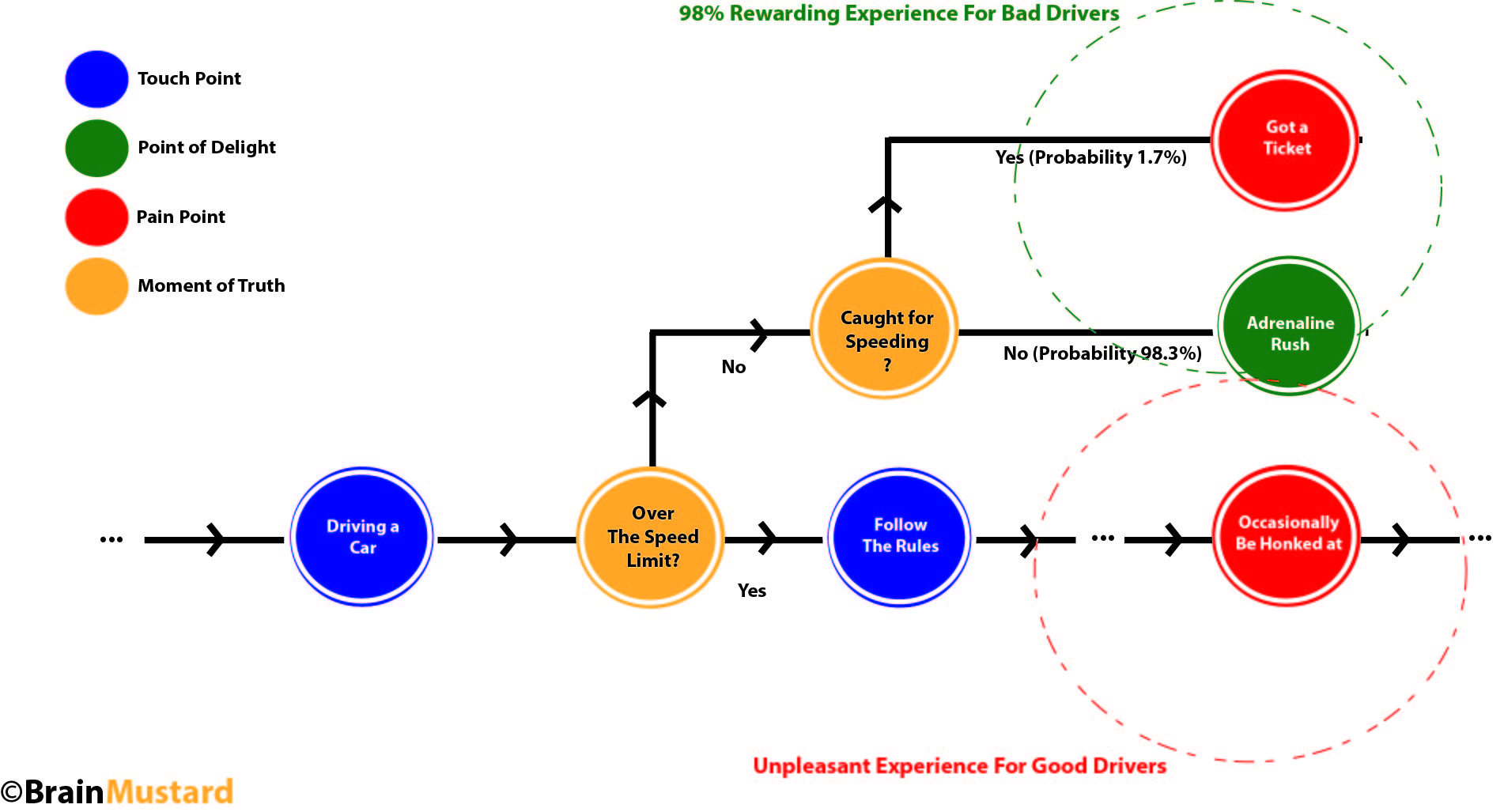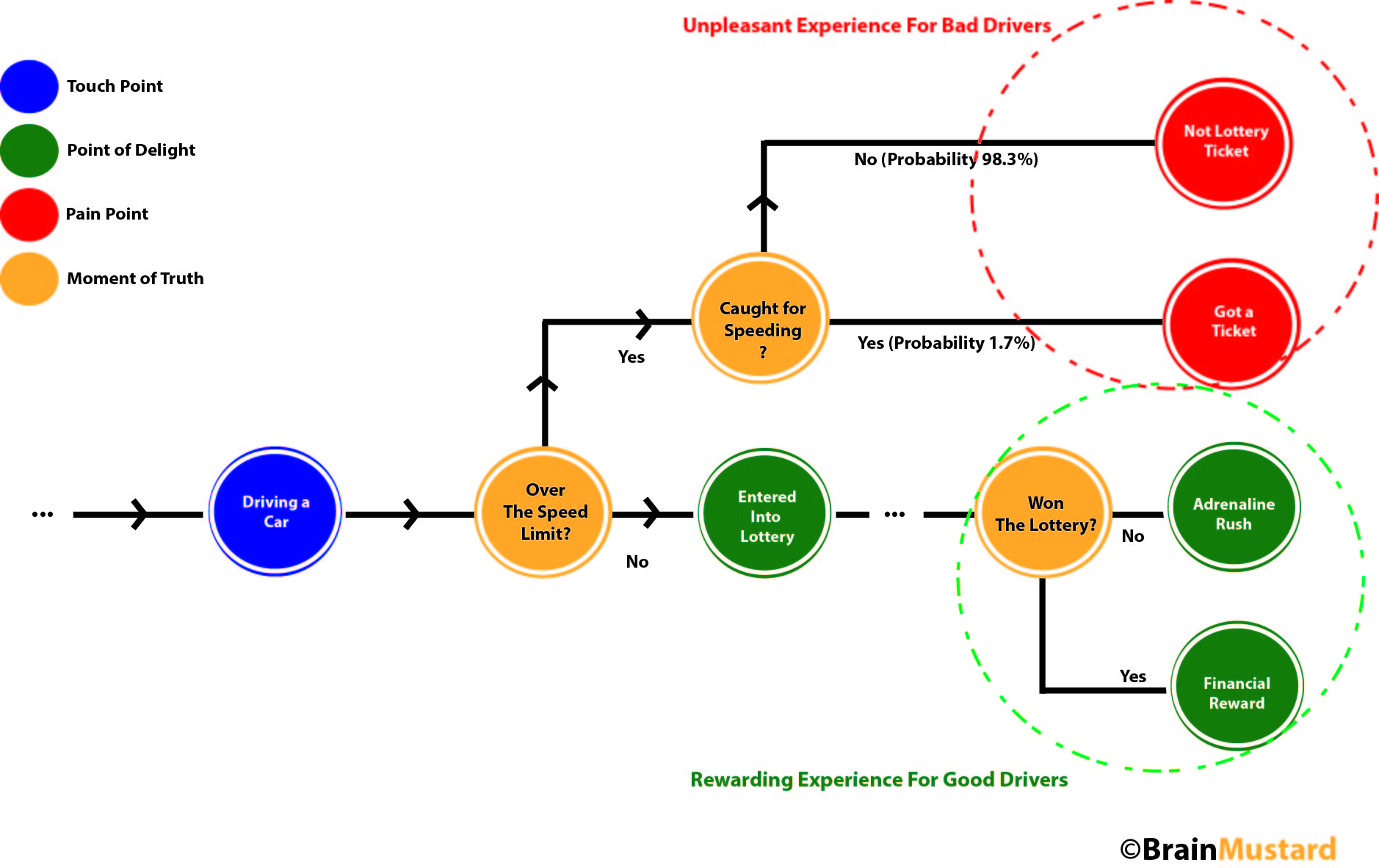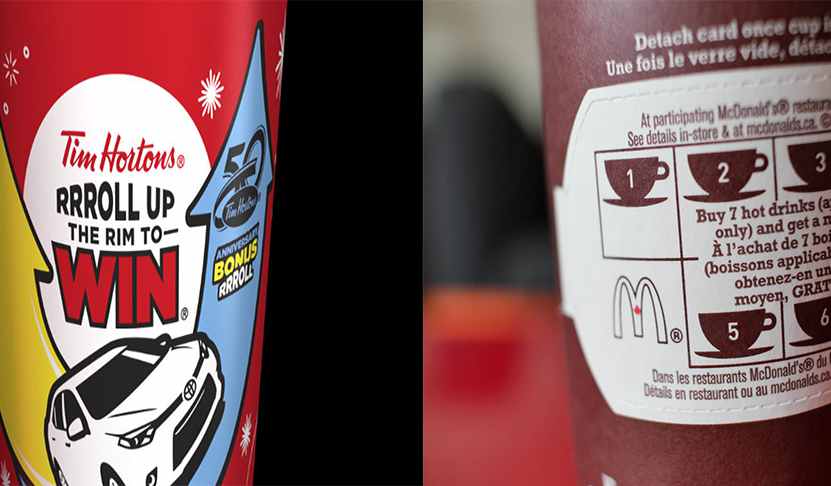Customer Experience of Unpredictability
BrainMustard Customer Experience Series
About this Article
The Customer Experience Series by BrainMustard are based on the customer experience maps and social influence graphs built from scanning and analyzing millions of contents from the Internet chatter.
These models and maps offer revealing and unexpected consumer insights to formulate new initiatives to increase sales. Check out our success stories at http://www.BrainMustard.com
Got a question?
- 10 Alcorn Ave. / #204 / Toronto / Canada
- 416-556-3909
- Contact@BrainMustard.com
Customer Experience of Unpredictability
We all have a preference for familiar. In psychology, this is called “mere exposure” effect. We like things to which we have already been exposed. Naturally, companies work hard to bring consistency to their customer experience in order to tap into this innate human characteristic. Many touch points such as menus in fast food chains, timetables for trains, process of renting a car at the airport benefit greatly from this consistency.
However, there are experience points in customer journey that randomness and surprises make them more desirable and enhances the overall customer experience. This is nowhere more prominent than when it comes to our neural reward system.
***
Contrary to common belief, we are not rational creatures. That’s the reason why we prefer surprises over the Pavlovian and predictable rewards that resemble salaries and wages. Unpredictable rewards and surprises offer us a delightful feeling that can be highly addictive. Weekly lottery tickets are a clear example of this. Buyers all share the commonality of anticipating results. They know that the chances of winning the lottery are slimmer than being struck by lightning – twice. But they play it anyway because the anticipation is the reward in itself.
***

I still remember the joyful grin on my father’s face as he revved the engine and tore down city streets. The adrenaline rush pumped through his bloodstream. Time to time, he would mention “I just made $150” referring to the amount of ticket that he would have received if he was caught while violating the basic traffic law! He was a chartered accountant by trade and he knew that he was not making money that way. But certainly, if he was placed under an fMRI machine, the same areas of his brain would be activated as if he had won a $150 jackpot. When the city increased the penalty for traffic violations, it didn’t deter my dad. On the contrary, it just increased the kick of adrenaline for him. Figure above, clearly shows the current experience rewards the violators of traffic laws simply because they get caught fewer than 2% of times when they break them but they always enjoy the adrenaline rush of taking risks.
***

This is where an understanding underlying irrationalities under which we humans operate helps us to design more effective experiences.
For example, in an effort to make road-safety ‘more fun’, in Sweden, they designed a speed lottery camera which monitors when vehicles not only come in above the posted speed, but under the limit. Coming in at a lower speed automatically enters the driver in a lottery system, where the prizes come from the fines paid by those who were speeding. As a result, the law abiding drivers, too, experience some of the anticipatory rush of adrenaline. And, there was a 22% reduction of average speed. This is mainly due to the fact that speed camera lottery not only punishes the violators but it also rewards the good drivers and enhances their driving experience.

The customer experience for retailers can benefit immensely from this. Consider the differences in the loyalty programs between McCafe and Tim Horton’s.
They are both offering free rewards through beverage purchases. While McCafe provides customers with the predictable incentive of receiving a free coffee after seven coffee purchases, Tim Horton’s is exciting customers with their Roll-up-the-Rim prizes with every hot beverage, with a variety of surprise rewards from nothing to a free donut to cars, and electronics.
A random walk of social media among Canadians clearly indicates that it is the Tim Horton’s program that is talked about more often. Because the element of surprise that comes out of an unexpected pleasantry will always be more gratifying to a customer than a reward that they are expecting.
Looking for similar articles from BrainMustard? Click Here
Copyright © BrainMustard
We all have a preference for familiar. In psychology, this is called “mere exposure” effect. We like things to which we have already been exposed. Naturally, companies work hard to bring consistency to their customer experience in order to tap into this innate human characteristic. Many touch points such as menus in fast food chains, timetables for trains, process of renting a car at the airport benefit greatly from this consistency.
However, there are experience points in customer journey that randomness and surprises make them more desirable and enhances the overall customer experience. This is nowhere more prominent than when it comes to our neural reward system.
Contrary to common belief, we are not rational creatures. That’s the reason why we prefer surprises over the Pavlovian and predictable rewards that resemble salaries and wages. Unpredictable rewards and surprises offer us a delightful feeling that can be highly addictive. Weekly lottery tickets are a clear example of this. Buyers all share the commonality of anticipating results. They know that the chances of winning the lottery are slimmer than being struck by lightning – twice. But they play it anyway because the anticipation is the reward in itself.

I still remember the joyful grin on my father’s face as he revved the engine and tore down city streets. The adrenaline rush pumped through his bloodstream. Time to time, he would mention “I just made $150” referring to the amount of ticket that he would have received if he was caught while violating the basic traffic law! He was a chartered accountant by trade and he knew that he was not making money that way. But certainly, if he was placed under an fMRI machine, the same areas of his brain would be activated as if he had won a $150 jackpot. When the city increased the penalty for traffic violations, it didn’t deter my dad. On the contrary, it just increased the kick of adrenaline for him. Figure above, clearly shows the current experience rewards the violators of traffic laws simply because they get caught fewer than 2% of times when they break them but they always enjoy the adrenaline rush of taking risks.

This is where an understanding underlying irrationalities under which we humans operate helps us to design more effective experiences. For example, in an effort to make road-safety ‘more fun’, in Sweden, they designed a speed lottery camera which monitors when vehicles not only come in above the posted speed, but under the limit. Coming in at a lower speed automatically enters the driver in a lottery system, where the prizes come from the fines paid by those who were speeding. As a result, the law abiding drivers, too, experience some of the anticipatory rush of adrenaline. And, there was a 22% reduction of average speed. This is mainly due to the fact that speed camera lottery not only punishes the violators but it also rewards the good drivers and enhances their driving experience.

The customer experience for retailers can benefit immensely from this. Consider the differences in the loyalty programs between McCafe and Tim Horton’s. They are both offering free rewards through beverage purchases. While McCafe provides customers with the predictable incentive of receiving a free coffee after seven coffee purchases, Tim Horton’s is exciting customers with their Roll-up-the-Rim prizes with every hot beverage, with a variety of surprise rewards from nothing to a free donut to cars, and electronics. A random walk of social media among Canadians clearly indicates that it is the Tim Horton’s program that is talked about more often. Because the element of surprise that comes out of an unexpected pleasantry will always be more gratifying to a customer than a reward that they are expecting.
Looking for similar articles from BrainMustard? Click Here
Copyright © BrainMustard